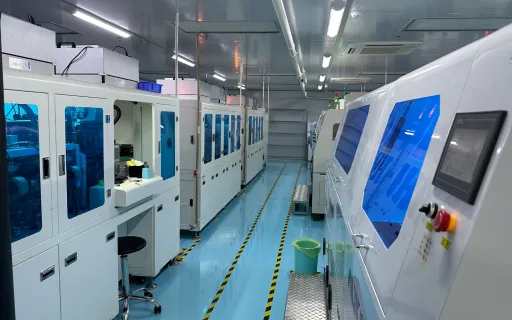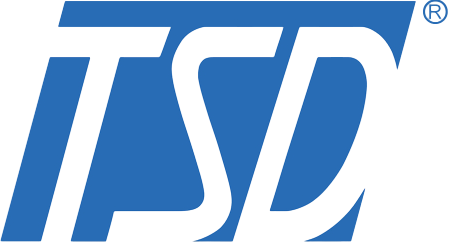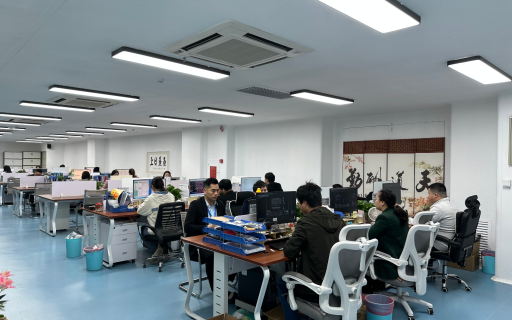Recognizing Excellence in Display Manufacturing
Advanced Cleanroom Infrastructure
A trustworthy lcd display factory operates within state‑of‑the‑art cleanroom environments, typically meeting ISO Class 5 or better. These clean zones ensure minimal particulate contamination, essential for processes like TFT deposition and cell assembly. Strict climate controls maintain consistent temperature and humidity levels, preventing defects such as Mura or dust specks. Automated air filtration with HEPA/ULPA filters performs hundreds of air exchanges per hour. Staff follow gowning protocols, using full-body suits, gloves, masks, and boot covers to further reduce contamination risk. This level of cleanliness is foundational to manufacturing high-resolution, defect-free displays that meet performance expectations.
Comprehensive Quality Control Systems
A reputable lcd display factory employs multi-stage quality assurance across every production step—from substrate inspection to final optical testing. Incoming quartz or glass wafers are checked for flatness, surface integrity, and edge quality. During TFT and backplane production, photo‑optical inspection and metrology tools monitor line width, sheet resistance, and pixel viability. Cell assembly includes vacuum filling, UV sealing, and controlled cell gap measurements. Backlight integration and final calibration involve brightness, uniformity, color, and contrast tests. Final products undergo burn-in, temperature-humidity cycling, and vibration testing. MES/ERP systems collect traceable data for defect tracking and yield optimization, reinforcing output consistency and reliability.
Engineering and Process Excellence
Precision Thin Film Transistor Fabrication
The heart of a modern lcd display factory lies in TFT patterning using photolithography, sputtering, and etching to create millions of microscopic switches. Process stability is maintained through computerized equipment, real-time metrology, and statistical process control, ensuring uniform pixel response time and minimal defects. Mask alignments must meet sub-micron accuracy, while deposition thicknesses are controlled at angstrom-level precision. Any deviations prompt immediate corrective actions to prevent production of flawed panels. Only facilities with robust process control can produce displays that meet demanding specifications consistently.
Reliable Cell Bonding and Liquid Crystal Filling
After TFT fabrication, panels are bonded into cells using sealants and spacers with exacting tolerances in a dust-free environment. A quality lcd display factory ensures consistent cell gap widths to promote uniform optical behavior. Vacuum filling of liquid crystal followed by UV curing reduces voids and defects. Post-sealing, each module is checked for leakage current, response times, and pixel uniformity. Automated optical inspection systems examine every panel for Mura, black spots, or brightness shift. This precision bonding process ensures reliability and visual performance over long-term use.
Technology & Data Management
Smart Factory Connectivity and Diagnostics
A high-end lcd display factory integrates real-time data collection via MES systems from each production stage. Equipment sends performance metrics—yield rates, process variances, defect counts—to a central dashboard. This real-time visibility allows immediate adjustments and predictive maintenance planning. Remote diagnostics minimize downtime, while production analytics feed continuous process improvement. Such industrial IoT-enabled management ensures transparency and maximizes throughput without compromising quality.
Sustainable Manufacturing Practices
Leading lcd display factory operations adhere to environmental and safety standards such as ISO 14001 and RoHS/REACH compliance. Wastewater, solvent, and chemical runoffs are treated on-site. Glass and raw material scraps are recycled, and exhaust is filtered to reduce emissions. Energy-efficient HVAC and lighting systems, plus chemical recycling and proper disposal protocols, illustrate commitment to green manufacturing. These eco-friendly measures not only enhance environmental responsibility but also appeal to sustainability-conscious clients.

Supply Chain and Logistics Strength
Secure Component Sourcing and Material Management
An efficient lcd display factory builds partnerships with reliable suppliers for components such as polarizers, color filters, IC drivers, and backlight units. Consistent material quality enables better production yields. Strategic inventory practices minimize downtime from material shortages. Barcoding and RFID systems ensure transparent component tracking and FIFO compliance. The right materials, delivered on time, play a critical role in stable, large-volume display production.
Export Compliance and Global Delivery Capabilities
Factories experienced in international business manage customs compliance, certification documents, and shipping logistics seamlessly. Professional export departments handle documentation for CE, UL, RoHS, and warranty records. Finished goods are safely packed in ESD-proof and vibration-resistant containers. Real-time shipment tracking and regional warehousing allow flexible delivery schedules. A lcd display factory with these logistics capabilities reduces customer lead time and strengthens global service.
Human Expertise and Innovation
Skilled Engineering and R&D Workforce
Behind every advanced lcd display factory is a team of skilled engineers in photonics, chemistry, materials science, and electronics. These professionals oversee process development, yield improvement, and innovation. R&D teams drive pixel refinement, backlight uniformity, and response-time optimization. Ongoing training programs keep staff aligned with evolving technologies, enabling the factory to offer displays for various sectors including automotive, industrial, and wearable electronics.
Commitment to Continuous Improvement
The best lcd display factory applies lean manufacturing, Six Sigma, and Kaizen principles to enhance production lines over time. Continuous monitoring and feedback loops identify root causes and bottlenecks. Automation is upgraded based on output analysis. These efforts ensure the factory doesn't stagnate, but grows more efficient, productive, and responsive to industry trends and client needs.
Customer Satisfaction and OEM Integration
Customization and Co-Design Support
To support OEM partners, a good lcd display factory offers design-in support for special shapes, brightness levels, or interface requirements. Engineers collaborate with clients to meet mechanical and electrical specs. This customer-centric approach allows fast prototyping and volume ramp-up, reducing time to market. Reliable factories treat customization not as an obstacle but as an opportunity for innovation and partnership growth.
Transparent Communication and Project Management
High-quality lcd display factory teams provide regular project updates, samples for approval, and progress reports on manufacturing schedules. Communication remains transparent, and problems are addressed with solutions, not delays. Account managers and project engineers respond quickly to inquiries and documentation needs, giving clients confidence and peace of mind throughout the partnership.
FAQ
What cleanroom standard indicates a top‑tier production facility?
A high‑quality lcd display factory maintains cleanrooms at ISO Class 5 or better in zones where TFT deposition and cell assembly occur, reflecting advanced contamination control.
How does a good factory ensure display panel reliability?
Trustworthy lcd display factories employ multi-stage inspections, including burn-in testing, environmental stress tests, optical checks, and statistical yield monitoring to guarantee reliability.
Why is traceability important in display manufacturing?
Traceability via full batch records and serial numbers allows quick identification of production issues and supports quality control, warranty handling, and regulatory compliance.
What certifications should a reliable lcd display factory hold?
Look for certifications like ISO 9001, ISO 14001, CE, RoHS/REACH compliance, and UL listings. These demonstrate adherence to quality, environmental, and safety standards.




